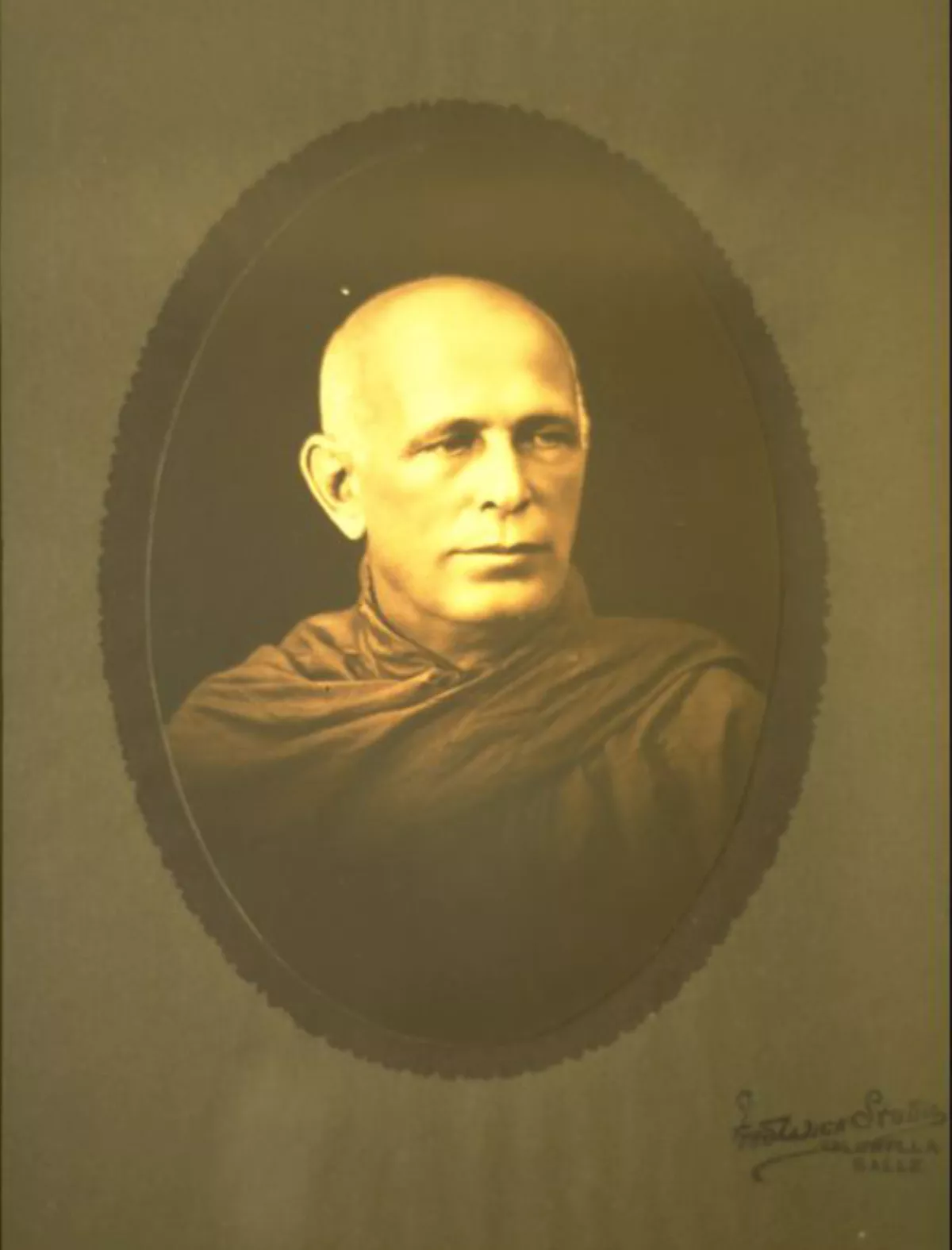 1.
1. Nyanatiloka Mahathera, born as Anton Walther Florus Gueth, was one of the earliest Westerners in modern times to become a Bhikkhu, a fully ordained Buddhist monk.

 1.
1. Nyanatiloka Mahathera, born as Anton Walther Florus Gueth, was one of the earliest Westerners in modern times to become a Bhikkhu, a fully ordained Buddhist monk.
Nyanatiloka was born on 19 February 1878 in Wiesbaden, Germany, as Anton Walther Florus Gueth.
Nyanatiloka's father was Anton Gueth, a professor and principal of the municipal Gymnasium of Wiesbaden, as well as a private councillor.
Nyanatiloka had studied piano and singing at the Royal Court Theatre in Kassel.
Nyanatiloka studied at the Konigliche Realgymnasium in Wiesbaden from 1888 to 1896.
Nyanatiloka was brought up as a Catholic and as a child and adolescent he was quite devout.
Nyanatiloka went to church every evening and absorbed himself in the book The Imitation of Christ by Thomas a Kempis.
Nyanatiloka composed orchestral pieces and in 1897 his first composition called "Legende" was played by the Kurhaus Orchestra of Wiesbaden.
Nyanatiloka studied Plato's Phaedo, Descartes, Kant's Critique of Pure Reason, von Hartmann and especially Schopenhauer.
Nyanatiloka had a great interest for languages, foreign countries and peoples.
In 1903, at the age of 25, Nyanatiloka briefly visited Sri Lanka and then proceeded to Burma to meet the English Buddhist monk Bhikkhu Ananda Metteyya.
Nyanatiloka stayed at Kyundaw Kyaung, near Rangoon, in a residence built for Ananda Metteyya and him by the rich Burmese lady Mrs Hla Oung.
Nyanatiloka gave the going forth to the German Walter Markgraf, under the name Dhammanusari, who soon disrobed and returned to Germany.
Markgraf became a Buddhist publisher and founded the German Pali Society, of which Nyanatiloka became the Honorary President.
In 1906, Nyanatiloka published his first Buddhist work in German, Das Wort des Buddha, a short anthology of the Buddha's discourses arranged by way of the framework of the Four Noble Truths.
Nyanatiloka gave his first public talk, on the Four Noble Truths, in 1907.
Nyanatiloka spoke in Pali and a Burmese Pali expert translated.
Enrico Bignani, the publisher of Coenobium: Rivista Internazionale di Liberi Studi from Lugano had found a solitary alpine hut at the foot of Monte Lema Mountain, near the village of Novaggio overlooking Lake Maggiore, and Nyanatiloka left Burma for Novaggio at the end of 1909 or the beginning of 1910.
Nyanatiloka's stay and plans drew a lot of attention from the press and several journalists visited him to write about him and the planned monastery.
However, Nyanatiloka suffered heavily from bronchitis and malnutrition, and after half a year left Novaggio with the German monk candidate Ludwig Stolz, who had joined him at Novaggio, to try to find a better place in Italy or North Africa.
From Konnanno, Nyanatiloka heard about an abandoned jungle island in a lagoon at the nearby village of Dodanduva that would be a suitable place for a hermitage.
In 1913 Nyanatiloka started a mission for the Sri Lankan "outcastes", Rodiya, beginning in the area of Kadugannava, west of Kandy.
Nyanatiloka travelled to Sikkim in 1914 with the intention to travel on to Tibet.
Nyanatiloka then travelled on to Tumlong monastery where Alexandra David-Neel and Silacara were staying, and returned to Gangtong the next day.
Nyanatiloka returned to Sri Lanka accompanied by two Tibetans, who became monks at the Island Hermitage.
Nyanatiloka was released in 1916 on the condition that he would return to Germany.
In 1920, after being denied re-entry into British ruled Sri Lanka and other British colonies in Asia, Nyanatiloka went to Japan with his German disciples Bhikkhu Vappo and Sister Uppalavanna.
Nyanatiloka taught Pali and German at Japanese universities for five years, including at Taisho University where he was assisted by the legendary eccentric Ekai Kawaguchi, and at Komazawa University where he taught with President Yamagami Sogen, who had studied Pali in Sri Lanka.
Nyanatiloka met with Japanese Theravada monks, but could not stay in any monasteries in Japan.
Nyanatiloka lived through the 1923 Great Kanto earthquake, which destroyed Tokyo, but was surprised to see universities reopen just two months later.
Nyanatiloka continued working on his translations of Pali texts during this period.
Anagarika Govinda, the later Lama Govinda came in 1928 and with Nyanatiloka founded the International Buddhist Union, which stopped functioning after Govinda converted to Tibetan Mahayana and Vajirayana Buddhism a few years later.
All applicants for ordination were taught Pali by Nyanatiloka, who considered a working knowledge of Pali indispensable for a proper understanding of Theravada Buddhism since the translations of Buddhist texts at that time were often faulty.
In 1939, with the British declaration of war against Nazi Germany, Nyanatiloka and other German-born Sri Lankans were again interned, first again at Diyatalawa Garrison in Sri Lanka and then in India at the large internment camp at Dehradun.
In December 1950, Nyanatiloka became a citizen of the newly independent Ceylon.
In 1954, Nyanatiloka and his disciple Nyanaponika were the only two Western-born monks invited to participate in the Sixth Buddhist council in Yangon, Burma.
Nyanatiloka served as the first Patron of the Lanka Dhammaduta Society which was founded by Asoka Weeraratna in Colombo, Sri Lanka on 21 Sept 1952.
Nyanatiloka attended and spoke at the Public Meeting held at Ananda College, Colombo on 30 May 1953 [1] which was presided by Hon.
Nyanatiloka resided temporarily at a new Training Centre for Buddhist Missionary work in Germany that was opened by the Lanka Dhammaduta Society in Dalugama, Kelaniya in 1953.
Nyanatiloka died on 28 May 1957 in Colombo, Sri Lanka.
At that time Nyanatiloka was resident at the Sanghavasa located on the newly opened premises of the German Dharmaduta Society at 417, Bullers Road, Colombo 07.
Nyanatiloka was given a state funeral which had the then Prime Minister of Sri Lanka, Hon.